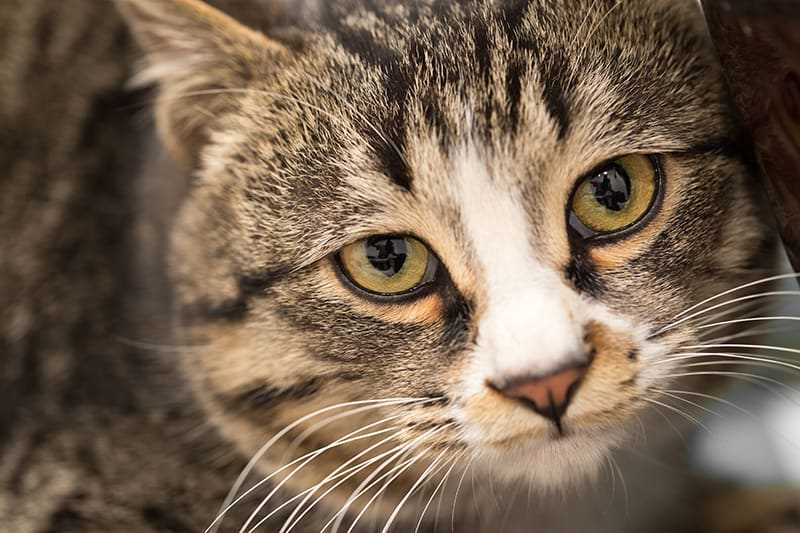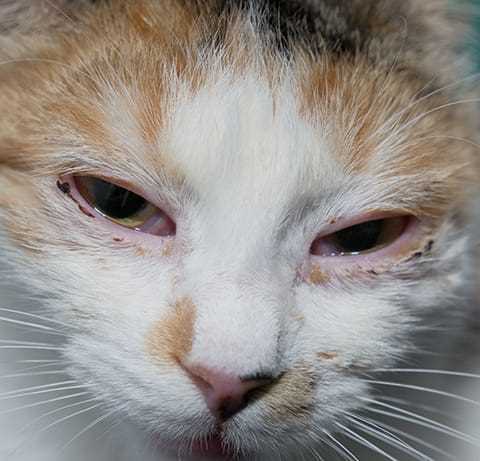



To maintain optimal well-being, regular eye examinations are crucial for our feline friends. Inadequate hygiene, allergens, or bacteria can lead to discomfort and serious complications. It’s vital to observe your companion closely for signs of redness, discharge, or excessive squinting.
Common irritants include dust, pollen, and household chemicals. Ensuring a clean living environment can significantly reduce exposure to these triggers. Additionally, routine grooming helps remove debris that may cause irritation, particularly for long-haired breeds.
Infection may also stem from underlying health conditions. A weakened immune system can make one more susceptible to various pathogens. Regular veterinary check-ups can help identify these issues early, allowing for prompt intervention and treatment.
Watch for changes in behavior, such as pawing at the face or increased sensitivity to light. If any symptoms arise, seeking veterinary advice is recommended without delay. Timely care can prevent more severe complications down the line.
Common Causes of Eye Infections in Cats

Allergies are a frequent culprit behind irritations in the ocular area. Pollen, dust, or certain foods can trigger reactions, leading to discharge and discomfort. If you notice watery eyes, consider reviewing the environment for potential allergens.
Injury to the eye is another major factor. Scratches or foreign objects can introduce bacteria, causing inflammation. Regularly checking for signs of trauma can help prevent more serious complications.
Conjunctivitis, or inflammation of the mucous membranes, often results from viral or bacterial infections. Symptoms include redness and swelling; prompt veterinary attention is crucial to prevent worsening conditions.
Underlying health issues, such as respiratory infections, can also contribute to ocular problems. Keeping an eye on overall health can provide insights into any emerging concerns.
Lastly, poor hygiene can lead to an accumulation of dirt and debris around the eyes, increasing the risk of infection. Regular cleaning of the face helps maintain good hygiene and reduces the likelihood of irritations.
If you’re curious about dietary impacts, check out this article on can cats eat mac and cheese for more information.
Signs and Symptoms to Watch For

If you notice any unusual behavior, it’s time to pay attention. Look for excessive tearing or discharge from the eyes; this can indicate irritation or an underlying problem. Redness or swelling around the eyelids should not be ignored, as it often signifies inflammation that needs addressing.
Squinting or keeping the eyes closed more than usual may suggest discomfort. Watch for pawing at the face or rubbing against furniture–this can indicate that something is bothering me. If I seem sensitive to light, it could mean my eyes are in distress.
Changes in my usual activity level might also be a signal. If I’m less playful or more withdrawn, something may be off. A visit to the vet is advisable if these signs persist. Remember, early detection can make a significant difference in treatment outcomes.
In some cases, you may notice a change in my appetite or grooming habits. If I’m not eating well or neglecting my fur, it’s time for a check-up. Don’t hesitate to consult your vet if you suspect something is wrong. Also, for those wondering about medication options, check out this link on can you give claritin to cats for insights.
To maintain optimal well-being, regular eye examinations are crucial for our feline friends. Inadequate hygiene, allergens, or bacteria can lead to discomfort and serious complications. It’s vital to observe your companion closely for signs of redness, discharge, or excessive squinting.
Common irritants include dust, pollen, and household chemicals. Ensuring a clean living environment can significantly reduce exposure to these triggers. Additionally, routine grooming helps remove debris that may cause irritation, particularly for long-haired breeds.
Infection may also stem from underlying health conditions. A weakened immune system can make one more susceptible to various pathogens. Regular veterinary check-ups can help identify these issues early, allowing for prompt intervention and treatment.
Watch for changes in behavior, such as pawing at the face or increased sensitivity to light. If any symptoms arise, seeking veterinary advice is recommended without delay. Timely care can prevent more severe complications down the line.
Common Causes of Eye Infections in Cats

Allergies are a frequent culprit behind irritations in the ocular area. Pollen, dust, or certain foods can trigger reactions, leading to discharge and discomfort. If you notice watery eyes, consider reviewing the environment for potential allergens.
Injury to the eye is another major factor. Scratches or foreign objects can introduce bacteria, causing inflammation. Regularly checking for signs of trauma can help prevent more serious complications.
Conjunctivitis, or inflammation of the mucous membranes, often results from viral or bacterial infections. Symptoms include redness and swelling; prompt veterinary attention is crucial to prevent worsening conditions.
Underlying health issues, such as respiratory infections, can also contribute to ocular problems. Keeping an eye on overall health can provide insights into any emerging concerns.
Lastly, poor hygiene can lead to an accumulation of dirt and debris around the eyes, increasing the risk of infection. Regular cleaning of the face helps maintain good hygiene and reduces the likelihood of irritations.
If you’re curious about dietary impacts, check out this article on can cats eat mac and cheese for more information.
Signs and Symptoms to Watch For

If you notice any unusual behavior, it’s time to pay attention. Look for excessive tearing or discharge from the eyes; this can indicate irritation or an underlying problem. Redness or swelling around the eyelids should not be ignored, as it often signifies inflammation that needs addressing.
Squinting or keeping the eyes closed more than usual may suggest discomfort. Watch for pawing at the face or rubbing against furniture–this can indicate that something is bothering me. If I seem sensitive to light, it could mean my eyes are in distress.
Changes in my usual activity level might also be a signal. If I’m less playful or more withdrawn, something may be off. A visit to the vet is advisable if these signs persist. Remember, early detection can make a significant difference in treatment outcomes.
In some cases, you may notice a change in my appetite or grooming habits. If I’m not eating well or neglecting my fur, it’s time for a check-up. Don’t hesitate to consult your vet if you suspect something is wrong. Also, for those wondering about medication options, check out this link on can you give claritin to cats for insights.
To maintain optimal well-being, regular eye examinations are crucial for our feline friends. Inadequate hygiene, allergens, or bacteria can lead to discomfort and serious complications. It’s vital to observe your companion closely for signs of redness, discharge, or excessive squinting.
Common irritants include dust, pollen, and household chemicals. Ensuring a clean living environment can significantly reduce exposure to these triggers. Additionally, routine grooming helps remove debris that may cause irritation, particularly for long-haired breeds.
Infection may also stem from underlying health conditions. A weakened immune system can make one more susceptible to various pathogens. Regular veterinary check-ups can help identify these issues early, allowing for prompt intervention and treatment.
Watch for changes in behavior, such as pawing at the face or increased sensitivity to light. If any symptoms arise, seeking veterinary advice is recommended without delay. Timely care can prevent more severe complications down the line.
Common Causes of Eye Infections in Cats

Allergies are a frequent culprit behind irritations in the ocular area. Pollen, dust, or certain foods can trigger reactions, leading to discharge and discomfort. If you notice watery eyes, consider reviewing the environment for potential allergens.
Injury to the eye is another major factor. Scratches or foreign objects can introduce bacteria, causing inflammation. Regularly checking for signs of trauma can help prevent more serious complications.
Conjunctivitis, or inflammation of the mucous membranes, often results from viral or bacterial infections. Symptoms include redness and swelling; prompt veterinary attention is crucial to prevent worsening conditions.
Underlying health issues, such as respiratory infections, can also contribute to ocular problems. Keeping an eye on overall health can provide insights into any emerging concerns.
Lastly, poor hygiene can lead to an accumulation of dirt and debris around the eyes, increasing the risk of infection. Regular cleaning of the face helps maintain good hygiene and reduces the likelihood of irritations.
If you’re curious about dietary impacts, check out this article on can cats eat mac and cheese for more information.
Signs and Symptoms to Watch For

If you notice any unusual behavior, it’s time to pay attention. Look for excessive tearing or discharge from the eyes; this can indicate irritation or an underlying problem. Redness or swelling around the eyelids should not be ignored, as it often signifies inflammation that needs addressing.
Squinting or keeping the eyes closed more than usual may suggest discomfort. Watch for pawing at the face or rubbing against furniture–this can indicate that something is bothering me. If I seem sensitive to light, it could mean my eyes are in distress.
Changes in my usual activity level might also be a signal. If I’m less playful or more withdrawn, something may be off. A visit to the vet is advisable if these signs persist. Remember, early detection can make a significant difference in treatment outcomes.
In some cases, you may notice a change in my appetite or grooming habits. If I’m not eating well or neglecting my fur, it’s time for a check-up. Don’t hesitate to consult your vet if you suspect something is wrong. Also, for those wondering about medication options, check out this link on can you give claritin to cats for insights.








